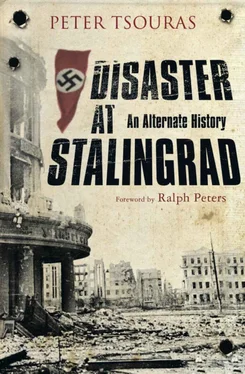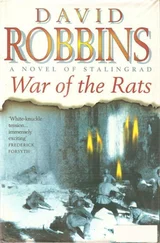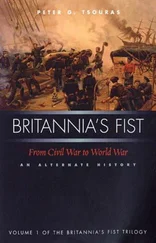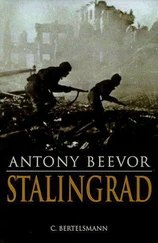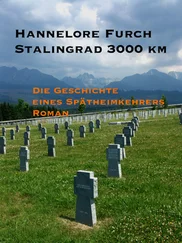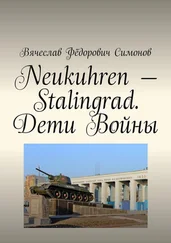8 *Steven J. Yablonsky, The Cruiser Action at The Battle of 20° East (Philadelphia: Appleton, 1986), p. 157.
9 *James R. Edison, Rolf Carls: The Knightly Admiral (London: Castlemere Publishers Ltd), p. 311. Carls’s rescue of so many British and American sailors made him the object of professional admiration in both countries to which he was welcomed after the war as a guest of their naval societies.
10 *Bruce W. Watson, The Intelligence Duel at the Battles of Bear Island and Twenty East (Washington, DC: Defence Intelligence University Press, 2010), p. 245.
11 *Robert C. Giffen, The Battle of 20° East (Boston: Liber Scriptus, 1952), p. 233.
12 Pope, 73 North, p. 184.
13 *Dudley Patterson, The Big George: The Story of the Battleship, USS Washington (Norfolk, VA: Warships Press, 1955), p. 93. The Washington was the only battleship in WWII to sink two enemy battleships, one in each theatre of war. Off Guadalcanal in 1943 it sank the IJN Kirishima without taking a single hit.
14 *Hartwell, Aerial Predator, p. 142.
15 Morison, The Battle That Won the War for Germany, p. 290.
16 Lieutenant David McCampbell would go on to become the US Navy’s top-scoring ace of World War II.
17 *Wilson J. Johnson, Duel of the Titans: Washington versus Tirpitz (New York: Gotham Publishers, 1960), p. 322.
18 *Morison, The Battle That Won the War for Germany, p. 376.
19 *Gerhardt von Kitzengen, Der Schalcht bei 20° Ost (Frankurt: Markbreit, 1976), p. 299.
20 *Harrison Kitteridge, For Want of a Nail: The Closure of the Arctic Convoy Route to Russia (New York: Mason & Chandler, 1995), pp. 322-34.
21 *Schumdt, Wolfsschanze, p. 287.
Chapter 7, Counting the Victories
1 Kessel, literally a kettle, but meaning in a military sense an encircled pocket of enemy forces.
2 Carell, Stalingrad, p. 63.
3 Carell, Hitler Moves East, p. 511.
4 Benôit Lemay, Erich von Manstein: Hitler’s Master Strategist (Philadelphia: Casemate, 2011), pp. 250-66.
5 Lemay, Manstein, pp. 34-8. Mischlinge was the Nazi term for Germans with a Jewish parent or grandparent.
6 Carell, Stalingrad, pp. 64-5.
7 Horst Scheibert, Panzer-Grenadier Division Grossdeutschland (Warren, MI: Squadron/Signal, 1977), pp. 7, 39-41.
8 NKVD — Narodnyi Kommissariat Vnutrennikh Del — People’s Commissariat for Internal Affairs — the Soviet secret police at the time of the Second World War.
9 Jones, Stalingrad, pp. 46-7.
10 Remaining at this point were USS Ranger, Saratoga, Enterprise and Hornet. The first of the Essex Class, the USS Essex, was commissioned in December 1942 and joined the fleet the next year. Also in 1943, the new USS Yorktown, Intrepid and Hornet joined the fleet in the Pacific. Yorktown and Hornet were named for the original ships lost at the battles of Midway and the Santa Cruz Islands.
11 *Edward W. Pruitt, Strategic Command Decisions of World War II (Washington, DC: Center for Military History, 1962), pp. 138-40.
12 Carell, Stalingrad, p. 63.
13 Jones, Stalingrad, pp. 23, 25.
14 Homer, tr. Robert Fagles, The Iliad (New York: Viking, 1990), 9.1-8.
15 Philipp von Boeselager, Valkyrie: The Plot to Kill Hitler (London: Phoenix, 2009), p. 72.
16 Matthew Hughes & Chris Mann, Inside Hitler’s Germany: Life Under the Third Reich (New York: MJF Books, 2000), p. 80.
17 Boeselager, Valkyrie, p. 74.
18 Chuikov, Battle for Stalingrad, pp. 18-19.
19 Jones, Stalingrad, p. 39.
20 Not to be confused with Rostov Veliki (Rostov the Great), a medieval city north of Moscow.
21 Carell, Stalingrad, p. 74.
22 Carell, Stalingrad, p. 78.
23 *Franz Halder, Decision at Werewolf (Frankfurt: Schiller, 1960), pp. 35-9.
24 *Erich von Manstein, Desperate Victories (New York: Steindorf, 1963), p. 131.
25 Craig, Enemy at the Gates, pp. 19-20.
26 Carell, Hitler Moves East, pp. 583-4.
27 Earl E. Zeimke, Stalingrad to Berlin (New York: Barnes & Noble, 1996), pp. 34, 39. Tank armies were made up of tank and mechanized corps, equivalent to panzer and panzergrenadier divisions.
28 Chuikov, Battle for Stalingrad, p. 31.
29 Stalin to Churchill, 23 July 1942, Works, Vol. 17, 1942, www.revolutionarydemocracy.org/Stalin/v17_1942.htm; accessed 30 March 2012.
30 Carell, Hitler Moves East, p. 587.
31 Chuikov, Battle for Stalingrad, pp. 33-6.
32 Jones, Stalingrad, p. 41.
33 V. I. Stalin, Sochineniia, Vol. 15 (Moscow, 1977), pp. 110-11.
34 *Gill, ‘Into the Caucasus’, pp. 150-1.
Chapter 8, ‘Those Crazy Mountain Climbers’
1 *Edwin R. Unger, Admiral Canaris: Master of Military Intelligence (London: Blackfriars, 1980), p. 211.
2 *Vernon T. Nelson, ‘Betrayal of the German Navy’, Naval Society Journal, Vol. XX, No. 3, June 1970.
3 A marcher land is a hostile border area between two states such as the border between England and Scotland, which was called the ‘Disputed Land’ for centuries as each side raided the other.
4 Mehmet Iconoglu, Turkey and the German Alliance (Cambridge: Massachusetts University Press, 1972), pp. 83-5.
5 Chuikov, Battle for Stalingrad, pp. 42-3.
6 Chuikov, Battle for Stalingrad, pp. 38, 47.
7 Chuikov, Battle for Stalingrad, pp. 51-2.
8 Beevor, Stalingrad, pp. 99-100.
9 Jones, Stalingrad, p. 29.
10 Beevor, Stalingrad, p. 97.
11 A Hoax at the Soviet oilfields’, www.germanmilitaryhistory.com/blog/51608-a-hoax-at-soviet-oil-fields, accessed 13 March 1942.
12 *Baron Adrian von Fölkersam, Green Devils: The Brandenburg Regiment in the Second World War (London: Greenhill, 1985), p. 93. This book is considered the authoritative account of the German special forces in World War II and was the type of military book gem that Greenhill Books editor/owner, Lionel Leventhal, the grand old man of British military publishing, was famous for bringing to the English-speaking readership.
13 Carell, Hitler Moves East, pp. 557-8.
14 David Glantz, To the Gates of Stalingrad: Soviet-German Combat Operations, April-August 1942 (Lawrence, KS: University of Kansas, 2009), p. 419.
15 Glantz, To the Gates of Stalingrad, pp. 429-31.
16 *Boris Oblomov, Monster: The Life of Lavrenti Beria (Boulder, CO: Eastview Press, 1993), pp. 290-2.
17 Carell, Hitler Moves East, p. 559.
18 *William S. Johnson, Hoist on Their Own Petard: The German Use of Soviet Equipment in World War II (London: Charing Cross Road Publishers, 1966), pp. 153—66.
19 *Alfredo Coletti, Soaring Roman Eagles: The Alpini in the Caucasus (New York: Frederick, Bolton Et Myers, 1966), p. 156. In appreciation of this assistance, the Germans emblazoned their Caucasus mountain fighting badge with the image of an Alpini mule.
20 *Manfried von Sulzbach, Conquering the Caucasus: German Mountain Troops in Action (Warren, MI: Squadron/Signal Publications, 1967), p. 122.
21 *Coletti, Roman Eagles, p. 157.
22 Hans Ulrich Rudel, Stuka Pilot (New York: Ballantine, 1958), p. 57.
23 Albert Speer http://forum.axishistory.com/viewtopic.php?f=50Ett=28721Etstart=0, accessed 17 March 2012.
Читать дальше
